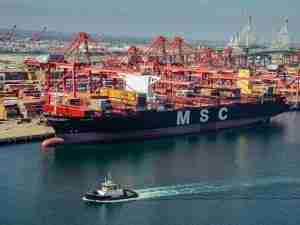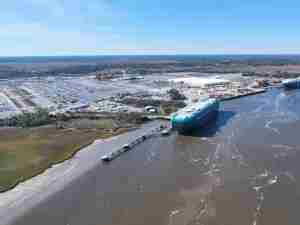Iron Ore Rings In 2016 as Holdings Swell at China’s Ports
By: Bloomberg | Dec 28 2015 at 11:29 AM | Maritime | Ports & Terminals
Iron ore stockpiles at ports in China are heading into 2016 at the highest level in more than seven months as expanding low-cost supplies and sputtering demand in the biggest buyer spur concern that a glut will persist, hurting prices.
“Stockpiles have been on the rise because domestic demand is getting weaker and shipments from the major producers have increased,” Dang Man, an analyst at Maike Futures Co. in Xi’an, said by phone on Monday. Mills have “been cutting production, which reduces demand for iron ore. So a lot of the stocks have remained at ports.”
Holdings rose 0.8 percent to 93.1 million metric tons last week in the final reading of 2015, according to Shanghai Steelhome Information Technology Co. The inventories are at the highest since May after expanding for four months.
Iron ore breached $40 a ton this month, hurt by surging low-cost supply from producers including BHP Billiton Ltd., Rio Tinto Group and Vale SA, weaker consumption and rising stockpiles. Mills in the country that supplies half the world’s steel reined in output as product prices sank and the onset of winter curbed demand already hurt by a cooling economy. Port holdings expanded 13 percent this quarter, the biggest gain since the first three months of 2014.
Back Above
“Inventories will continue to rise in 2016,” Dang said, forecasting that the holdings will probably climb back above 100 million tons. It won’t be a continuous increase because some high-cost mines will halt shipments, but the rising trend will persist, she said.
Iron ore has lost 27 percent this quarter and prices are set to cap a third annual decline, according to Metal Bulletin Ltd. Ore with 62 percent content delivered to Qingdao— which bottomed at $38.30 a dry ton this month, a record in daily price data dating back to May 2009—was at $41 on Thursday.
Shipments from Australia will expand by about 100 million tons to 868 million tons next year, the country’s Department of Industry, Innovation & Science said last week in a quarterly report that cut the government’s price forecast. As rising supplies from Australia and Brazil push iron ore lower in 2016, overcapacity in China’s steel industry is expected to weigh on steel prices, the Australian government said.
The rising port stockpiles are a reflection of the slowdown in demand in China, according to Australia & New Zealand Banking Group Ltd., which predicted in a note last week that the port reserves will increase further.
Axiom’s Outlook
Rising stockpiles of ore in China are a precursor to further declines in steel output, Axiom Capital Management Inc. said in a report on Monday that repeated a forecast for ore prices to drop into the $20s. The global surplus may expand to 490 million tons in 2019 from 107 million tons this year, it said.
As policy makers steer Asia’s biggest economy away from investment-led growth, steel demand and production are contracting. Next year, supply will drop to about 783 million tons from 806 million tons in 2015, the China Iron & Steel Association has forecast.
To contact the reporter on this story: Jasmine Ng in Singapore at [email protected] To contact the editors responsible for this story: Jason Rogers at [email protected] Jake Lloyd-Smith











